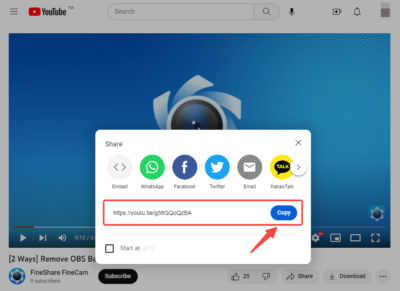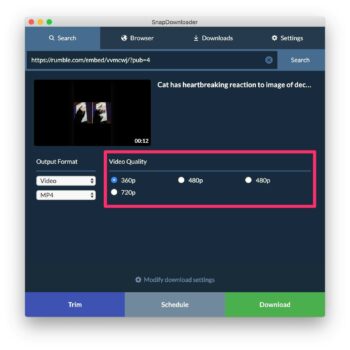1. Introduction
Welcome to our comprehensive blog post, where we delve into the world of Getty Images contributors and the critical decision they face: whether to be exclusive or non-exclusive contributors. As one of the leading stock photo agencies, Getty Images offers photographers and content creators lucrative opportunities to showcase their work.
However, understanding the benefits and drawbacks of each contributor status is paramount for making informed choices. In this post, we'll explore the pros and cons of exclusive and non-exclusive contributor status, providing valuable insights to help contributors navigate this crucial decision and pave the way for a successful and rewarding journey on Getty Images.
Also Read This: WireImage: The Best Stock Photo Agency for Journalists and Bloggers
2. What is an Exclusive Contributor?
![]()
An exclusive contributor on Getty Images is a content creator who agrees to license their images exclusively through Getty Images and refrains from selling the same images on other stock photo platforms or through independent means. By choosing exclusive contributor status, the photographer or content creator grants Getty Images the sole rights to distribute and license their work, providing them with enhanced benefits and advantages within the Getty Images ecosystem.
Advantages of being an exclusive contributor include higher royalty rates, priority placement in search results, and access to premium content requests. However, exclusivity also comes with limitations, as contributors must forego the opportunity to sell their images independently and restrict usage to Getty Images only. This choice requires a commitment to building a substantial and diverse portfolio, adhering to strict exclusivity guidelines, and considering long-term revenue potential.
Also Read This: How to Create an Outstanding LinkedIn Profile
3. What is a Non-Exclusive Contributor?
A non-exclusive contributor on Getty Images is a content creator who retains the right to license and sell their images on multiple stock photo platforms or through independent channels. Unlike exclusive contributors, non-exclusive contributors are not bound by an exclusive agreement with Getty Images and have the freedom to distribute their work elsewhere.
Non-exclusive contributors enjoy the flexibility of diversifying their income streams by selling their images on other platforms, reaching a broader audience, and exploring various licensing opportunities. However, being a non-exclusive contributor typically comes with lower royalty rates compared to exclusive contributors, and their images might have less priority in search results and promotional opportunities within the Getty Images marketplace.
Non-exclusive contributors have more control over how they market and monetize their work, making it an attractive option for those who wish to explore multiple avenues for image licensing and maintain creative independence. However, they should carefully manage their portfolio to avoid any conflicts regarding image usage rights and licensing agreements across different platforms.
Also Read This: A Step-by-Step Guide on How to Download VK Video in 1080p for High-Quality Video Saving
4. Pros and Cons of Exclusive Contributor Status
The following table summarizing the pros and cons of being an Exclusive Contributor on Getty Images:
| Pros of Exclusive Contributor | Cons of Exclusive Contributor |
|---|---|
| Higher royalty rates | Limited freedom to sell images elsewhere |
| Enhanced visibility and priority placement | Reduced potential for diversifying income sources |
| Exclusive access to premium content requests | Higher expectations for image exclusivity |
Exclusive contributors benefit from higher royalty rates, as their commitment to exclusivity allows Getty Images to offer more favorable compensation. They also enjoy improved visibility with priority placement in search results, increasing the chances of image sales. Additionally, exclusive contributors gain access to premium content requests, which can lead to higher-value assignments and licensing opportunities.
However, exclusivity means contributors must refrain from selling their images independently or on other stock photo platforms. This limitation can reduce the potential to diversify income sources, particularly if a photographer's work could find success in multiple markets. Additionally, maintaining strict exclusivity expectations may require a dedicated and extensive portfolio to meet customer demands effectively.
The following video is about Getty Images Contributor:
Also Read This: What Should I Shoot for Adobe Stock? Tips for Capturing Marketable Images
5. Pros and Cons of Non-Exclusive Contributor Status

The following table summarizing the pros and cons of being a Non-Exclusive Contributor on Getty Images:
| Pros of Non-Exclusive Contributor | Cons of Non-Exclusive Contributor |
|---|---|
| Freedom to sell images on multiple platforms | Lower royalty rates compared to exclusivity |
| Diversified income opportunities | Less priority in search results and promotional opportunities |
| Lower restrictions on image usage | Limited access to premium content requests |
Non-exclusive contributors enjoy the freedom to sell their images on multiple stock photo platforms, expanding their reach and potential for sales. This flexibility allows them to explore various licensing opportunities and cater to different markets.
With a diverse income stream, non-exclusive contributors can mitigate risks associated with relying solely on one platform for revenue. Moreover, they have fewer restrictions on image usage, giving them more control over how and where their work is used.
However, non-exclusive contributors typically receive lower royalty rates compared to their exclusive counterparts. Additionally, their images might have less priority in search results and promotional opportunities within the Getty Images marketplace. Furthermore, they might have limited access to premium content requests, which could offer higher-value assignments and exclusive licensing opportunities.
Lynyrd Skynyrd , 1974. Photo by Michael Ochs Archives/Getty Images pic.twitter.com/QTqmvlSbQX
— Classic Rock In Pics (@crockpics) August 7, 2023
Also Read This: Car Silence: Preventing Spotify from Auto-Playing in Your Car – A Guide
6. Factors to Consider When Choosing Exclusive or Non-Exclusive Status
When deciding between exclusive and non-exclusive status on Getty Images, contributors should carefully consider the following factors:
-
Income Goals and Revenue Expectations:
- Determine your financial objectives and how much income you aim to generate from your image licensing efforts.
- Compare the potential earnings as an exclusive contributor with higher royalty rates versus the potential diversification of income as a non-exclusive contributor.
-
Portfolio Size and Image Volume:
- Assess the size and quality of your image portfolio. A substantial and diverse portfolio may better support exclusivity, attracting more customers and licensing opportunities.
- Consider whether your portfolio is large enough to benefit from non-exclusivity, where images are distributed across multiple platforms.
-
Commitment to Exclusivity and Image Usage Control:
- Evaluate your willingness to commit to exclusivity and refrain from selling images independently or on other platforms for an extended period.
- Assess your comfort level with giving up some control over image usage to comply with exclusive licensing terms.
-
Market Competition and Niche Targeting:
- Analyze the competitiveness of your niche or subject matter. Exclusivity might help you stand out in less saturated markets.
- Consider whether non-exclusivity allows you to target a broader market and appeal to a larger customer base.
-
Platform and Community Benefits:
- Research the exclusive and non-exclusive contributor benefits offered by Getty Images, such as priority placement, promotional opportunities, and access to premium content requests.
- Assess how these benefits align with your goals and contribute to your success on the platform.
-
Long-Term Strategy:
- Think about your long-term strategy as a stock photo contributor. Consider if exclusivity or non-exclusivity aligns better with your career goals and creative aspirations.
-
Licensing Flexibility:
- Evaluate your willingness to explore different licensing models. Non-exclusivity allows for greater flexibility in licensing terms and usage restrictions.
-
Licensing Rights and Ownership:
- Consider your desire to maintain ownership of your images and how licensing exclusivity impacts the rights you retain as a content creator.
By carefully considering these factors, photographers and content creators can make informed decisions about whether to pursue exclusive or non-exclusive status on Getty Images, ensuring that their choice aligns with their individual goals and maximizes their success as contributors.
Also Read This: Repeat Rhythm: Repeating a Song on SoundCloud – A Continuous Audio Loop
7. Making the Decision: Exclusive, Non-Exclusive, or a Hybrid Approach
Making the decision between exclusive, non-exclusive, or a hybrid approach on Getty Images requires thoughtful consideration of individual preferences, goals, and circumstances. Here's how to approach each option:
-
Exclusive Contributor:
- Choose exclusivity if you prioritize higher royalty rates, enhanced visibility, and access to premium content requests.
- Ideal for photographers committed to building a significant and diverse portfolio solely on Getty Images.
- Suited for those who value the platform's promotional opportunities and wish to focus on a specific niche.
-
Non-Exclusive Contributor:
- Opt for non-exclusivity if you value the freedom to sell images on multiple platforms, diversify income sources, and maintain creative independence.
- Suitable for contributors with existing portfolios on other stock photo agencies or those exploring various licensing avenues.
- Recommended for photographers seeking to reach a broader audience and target multiple market segments.
-
Hybrid Approach:
- Consider a hybrid strategy if you wish to experiment with both exclusive and non-exclusive licensing models.
- You can choose to license some images exclusively on Getty Images while offering others on multiple platforms.
- This approach allows you to test which method aligns better with your income goals and creative preferences.
Remember that the choice doesn't have to be permanent. You can start as an exclusive contributor and later transition to non-exclusivity, or vice versa, depending on how your portfolio evolves and your experience on the platform. Whatever decision you make, regularly review and adjust your strategy to optimize your earnings, expand your reach, and achieve your long-term objectives as a Getty Images contributor.
Also Read This: Shop Siesta: Putting Your Etsy Shop on Vacation
8. Tips for Success as an Exclusive or Non-Exclusive Contributor
Regardless of whether you choose to be an exclusive or non-exclusive contributor on Getty Images, these tips can help you succeed and maximize your earnings:
Tips for Success as an Exclusive Contributor:
- Optimize Image Keywords and Descriptions: Use relevant and accurate keywords and descriptions to increase your images' visibility in search results.
- Maintain a Diverse and High-Quality Portfolio: Regularly add new, high-quality images to your portfolio to attract a wide range of customers and cater to various needs.
- Engage with Getty Images Community and Resources: Participate in forums, workshops, and webinars to learn from other contributors, gain insights, and stay updated on industry trends.
Tips for Success as a Non-Exclusive Contributor:
- Leverage Multiple Platforms for Image Sales: Upload your images to other reputable stock photo agencies to reach a broader audience and diversify your income sources.
- Analyze Market Trends and Tailor Content Accordingly: Research popular themes and subjects in the market and create content that aligns with current demand.
- Collaborate with Other Photographers and Creators: Network with fellow contributors, share experiences, and collaborate on projects to expand your creative reach and potential.
General Tips for Both Exclusive and Non-Exclusive Contributors:
- Understand and Follow Licensing Terms: Adhere to Getty Images licensing terms to avoid violations and legal issues.
- Regularly Review and Update Your Portfolio: Remove underperforming images and update your portfolio with fresh content to stay relevant and attractive to buyers.
- Promote Your Work: Utilize social media, blogs, and personal websites to showcase your images and drive traffic to your Getty Images portfolio.
- Stay Consistent and Patient: Building a successful stock photography career takes time and dedication. Stay consistent with your efforts and be patient as your portfolio grows and generates revenue.
- Analyze Sales Data and Customer Feedback: Monitor your sales data and customer feedback to identify trends, improve your work, and tailor future content to meet customer preferences.
By implementing these tips, you can enhance your visibility, attract more buyers, and increase your earnings as a Getty Images contributor, regardless of your chosen contributor status. Always remember that delivering high-quality, relevant, and marketable images is the key to long-term success in the stock photography industry.
Also Read This: Discover How to Generate AI Images for Free with This Simple Tool
9. FAQs
1. What is the difference between exclusive and non-exclusive contributors on Getty Images?
Exclusive contributors agree to only submit their images to Getty Images. This means that Getty Images has the exclusive right to license their images to customers. In return, exclusive contributors typically receive a higher commission rate on their sales.
Non-exclusive contributors are free to submit their images to other stock photo agencies. This means that their images could potentially be licensed by multiple agencies, which could lead to more sales. However, non-exclusive contributors typically receive a lower commission rate on their sales.
2. What are the pros and cons of being an exclusive contributor on Getty Images?
Pros:
- Exclusive contributors typically receive a higher commission rate on their sales.
- Getty Images has a large customer base, so exclusive contributors have a greater chance of their images being seen and licensed.
- Exclusive contributors can benefit from Getty Images's marketing and promotion efforts.
Cons:
- Exclusive contributors are limited to submitting their images to Getty Images. This could mean that their images are not seen by as many potential customers.
- Exclusive contributors may have to wait longer to get approved for the program.
- Exclusive contributors may have to agree to certain terms and conditions, such as providing Getty Images with exclusivity for a certain period of time.
3. What are the pros and cons of being a non-exclusive contributor on Getty Images?
Pros:
- Non-exclusive contributors are free to submit their images to other stock photo agencies. This means that their images could potentially be licensed by multiple agencies, which could lead to more sales.
- Non-exclusive contributors are not limited by any exclusivity agreements, so they can submit their images to as many agencies as they want.
- Non-exclusive contributors typically have more control over their pricing and terms of sale.
Cons:
- Non-exclusive contributors typically receive a lower commission rate on their sales.
- Non-exclusive contributors may have to compete with a larger pool of contributors for sales.
- Non-exclusive contributors may have to do their own marketing and promotion to get their images seen and licensed.
4. Which type of contributor is right for me?
The best type of contributor for you will depend on your individual circumstances and goals. If you are looking to maximize your earnings, then being an exclusive contributor may be the right choice. However, if you want more freedom and control over your images, then being a non-exclusive contributor may be a better option.
Ultimately, the decision of whether to become an exclusive or non-exclusive contributor is up to you. There is no right or wrong answer, and the best choice for you will depend on your individual needs and goals.
10. Conclusion
In conclusion, the choice between becoming an exclusive or non-exclusive contributor on Getty Images depends on individual preferences and goals. Exclusive contributors benefit from higher royalties, visibility, and exclusive access to premium content requests, ideal for those dedicated to building a focused portfolio within Getty Images.
On the other hand, non-exclusive contributors value the freedom to diversify income across multiple platforms while maintaining creative independence. A hybrid approach offers flexibility to experiment with both models. Ultimately, success as a contributor hinges on delivering high-quality, marketable images, adhering to licensing terms, and continually refining strategies to maximize earnings and reach broader audiences in the dynamic world of stock photography.














